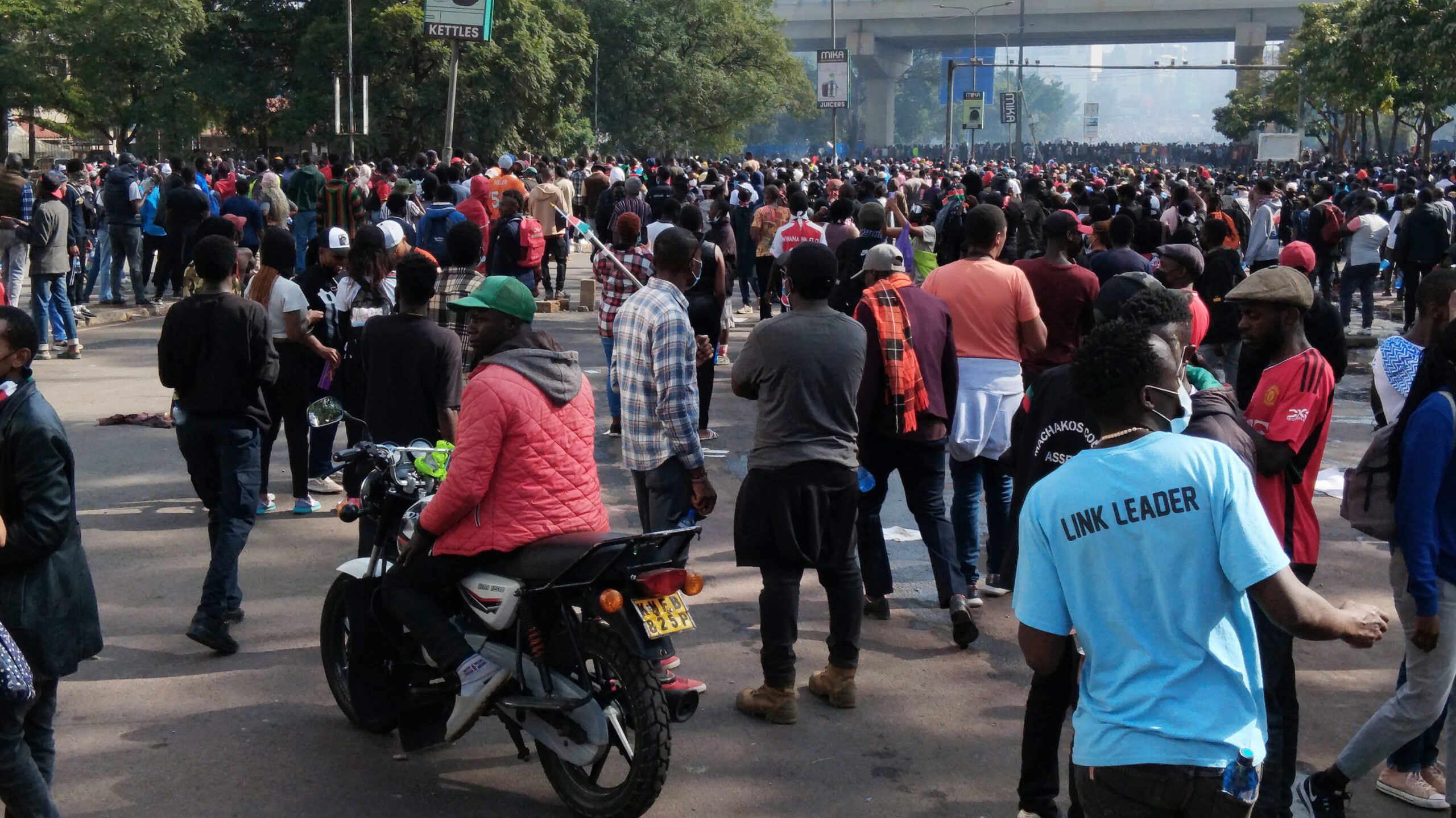Struggles of Boy Born with Hole in Heart
Thousands of children suffer from heart ailments in Kenya. Although many babies are born with heart defects, most have no signs or symptoms that would help them get early diagnosis and treatment. When signs and symptoms occur, a heart murmur is the most common, yet not all murmurs are signs of congenital heart defects as many healthy children have them. This is the dilemma that parents whose children are born with heart defects face. George William Obinga is one of such parent. His son was diagnosed with a heart defect at the age of six. He and his family have walked through a very challenging journey, as he narrates to MWAURA MUIGANA.
Derrick Otieno Obinga is 15 and in class seven but his peers are in form two. Sickness has kept young Derrick on and off school and at one time he dropped out completely. Derrick was born a healthy boy but things started going wrong when he was three years old. He became weak, inactive and preferred being alone and watch his peers play from a distance. When they forced him to join in play, he didn’t seem to enjoy, got tired very quickly and withdrew to his cocoon.
Derrick ran a permanent cough and when his parents took him to the clinic, the doctors prescribed cough syrups. The symptoms would temporarily disappear for a few days then recur. When the cough was really bad, doctors would prescribe antibiotics but they too didn’t seem to work. His performance in various activities at nursery school was dismal and continued to deteriorate when he got to primary school.
Other children mocked Derrick for lacking enthusiasm and being a weakling. They termed him a lazy bone. This put him down all the more and he became withdrawn. His parents were frustrated at their son being bullied by other children, often much younger than him, yet he couldn’t stand up for himself. His father, George William Obinga, who comes from Homa Bay, Rangwe division, re-lives the traumatising journey he has walked with his son.
“By his sixth birthday I noticed he couldn’t keep pace with me or other children when walking. Neither could he run. My assumption was that he was very lazy and I often scolded and challenged him to be active like his peers but he just couldn’t. I used to send him to the nearby shops and time him. His was a snail’s speed. It occurred to my wife and I that perhaps there was a problem and we stopped reprimanding him and instead decided to seek help.
Due to his constant coughing I suspected he was infected with Tuberculosis (TB) and consulted a doctor at a chest clinic at Reinsurance Plaza in Nairobi. My son could hardly walk the short distance from the matatu terminus to Reinsurance Plaza. He complained of being very tired and I let him rest severally until we made it to the clinic.
The specialist who examined Derrick gave him a prescription and fixed another appointment in two weeks’ time. The drugs suppressed the cough but Derrick’s mobility became quite challenged. After two weeks we went back to the doctor who suspected a heart problem and referred us to a cardiologist, Christine Jowi.
After examining Derrick, Christine referred him to Kenyatta National Hospital (KNH) for an echocardiogram (echo), a test that allows a doctor to clearly see any problem with the way the heart is formed or the way it is working. It is an important test for diagnosing a hole in the heart and for following the problem over time. The test helps the cardiologist decide whether and when treatment is needed.
My son was diagnosed with a severe heart problem. He was born with a hole in the heart, which had gone undetected and had reached a critical stage. She explained that echo could only indicate the problem to a certain extent. There was need for a more specialised procedure called cardiac catheterization that diagnoses and treats some heart conditions.
At the time the equipment at the cardiac department at KNH had broken down so she referred him to Matter Hospital, which has a well-established heart programe. She said the institution had all the facilities and expertise required to investigate and carry out corrective surgery.
Within the hospital’s heart programme is the ‘Mater Heart Run’ whose aim is to assist children from families that cannot afford the cost of cardiac surgery. Such families are requested to contribute whatever they can and the programme meets the rest of the bill. For my son to get treatment, I needed a down payment of Ksh 100,000. I couldn’t raise this money and I didn’t have a health insurance policy for my family because I couldn’t afford it.
My only hope was KNH where I continued taking my son for regular clinics for the next four years. The hospital hoped the government would allocate funds for repairs of the cardiac equipment but it didn’t happen in those four years. An intern doctor at KNH was sympathetic after checking Derrick’s file and hearing of my financial predicament. He connected me to a doctor who also recommended the Mater Hospital programme.
I was reluctant but she convinced me to try and also gave me a letter recommending my son to be put on the programme. I was required to pay Ksh 75,000 to have a sophisticated test carried out on my son but I didn’t have the money. I couldn’t take a loan as I had many loans pending payment, which I had taken to finance my son’s travel to hospital every month.
I was asked to pay Ksh 4,000 to have Derrick registered in the programme and with luck he might get a sponsor. I appealed to my family for help and they managed to raise more than the registration fee and this made it possible for my son to undergo the test. He was admitted at the Mater Hospital for two days in preparation for the test. When it was finally carried out, he developed complications and was in the intensive care unit (ICU) for five days and another 15 days in the general ward.
Doctor’s recommended that he be flown out of the country for specialised treatment but a sponsor was not immediately available. For the next one year he was down with various ailments including a kidney problem. One night in March 2011 we sought medical treatment at Mbagathi Hospital in Nairobi where he was admitted in a critical condition. While undergoing treatment he was infected with TB and this complicated his condition further. He was put on a six-month TB treatment regime.
It was quite some struggle with his health and it reached a point where he stopped attending school. He became very weak and at 13 years old weighed a mere 24 kilos. By April 2012 his legs were swollen and doctors said this signified he was in a serious condition. I decided to sell part of my land to save the life of my son. God intervened at that eleventh hour when he got a sponsor to undergo treatment at the Heart and Cancer Specialised Hospital in Britain.
After a lot of challenges we flew to the UK in late 2012 and the procedure was carried out successfully. He was in the ICU for three days and in the general wards for another 10 days after he developed lung complications. We returned to Kenya in December 21, 2012. Derrick is now okay and has resumed school and normal activities. It is a miracle to see him running and joining other children in their normal activities.”
(Side bar)
What is a hole in the heart?
A hole in the heart is a heart defect or problem with the heart’s structure that is present at birth. This defect changes the normal flow of blood through the heart. The heart works like a pump and beats 100,000 times a day. With each heartbeat, the right side of the heart receives oxygen-poor blood from the body and pumps it to the lungs to pick up oxygen. The left side of the heart receives oxygen-rich blood from the lungs and pumps it to the body.
The inner wall called septum prevents mixing of blood between the two sides of the heart. However, some babies are born with a hole in the upper or lower septum. A hole in the septum between the heart’s two upper chambers is called an atrial septal defect (ASD), whereas a hole in the septum between the heart’s two lower chambers is called a ventricular septal defect (VSD).
ASDs and VSDs allow blood to pass from the left side of the heart to the right side. Thus, oxygen-rich blood mixes with oxygen-poor blood. As a result, some oxygen-rich blood is pumped to the lungs instead of the body. The body receives the mixture, whose oxygen is not sufficient. This makes the heart pump harder to provide the body with what it needs. It may lead to an enlarged heart and heart failure if not corrected.
The diagnosis and treatment of ASDs and VSDs have greatly improved. Children who have simple congenital heart defects can survive to adulthood. They can live normal, active lives because their heart defects close on their own or have been repaired.
Published in August 2013




